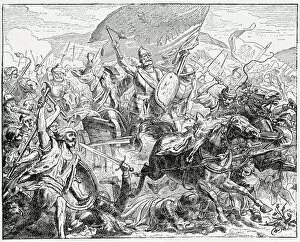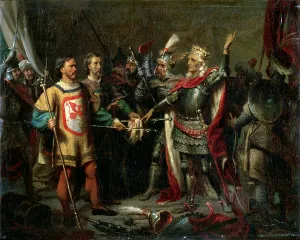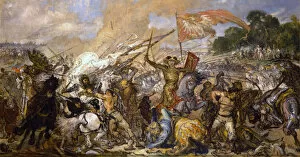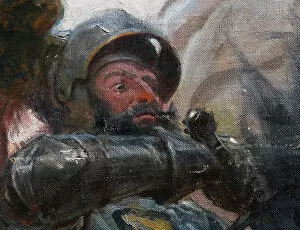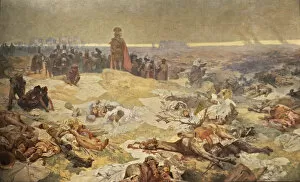Grunwald Collection
"The Battle of Grunwald: A Historic Triumph in 1410" In the annals of history, one battle stands out as a symbol of resilience and victory - the Battle of Grunwald
All Professionally Made to Order for Quick Shipping
"The Battle of Grunwald: A Historic Triumph in 1410" In the annals of history, one battle stands out as a symbol of resilience and victory - the Battle of Grunwald. Fought on July 15th, 1410, this monumental clash forever changed the course of Eastern European history. Jan Zizka, a legendary figure known for his military prowess, fought valiantly on the winning side at Grunwald. His strategic genius played a crucial role in securing triumph against all odds. In an awe-inspiring lithograph from 1882, we catch a glimpse of Zizka's unwavering determination. Wladyslaw II Jagiello, another key player before the battle commenced, can be seen in an intriguing photograph taken on that fateful day. The anticipation and resolve etched upon his face reveal the gravity of what was to come. The artistic renditions capturing this historic event are equally captivating. Matejko's sketch brings to life the chaos and bravery witnessed during those intense moments on the battlefield. Tadeusz Popiel's detailed paintings from 1910 further immortalize this epic clash between nations. But it is Alfons Marie Mucha's masterpiece "After the Battle of Grunwald" that truly encapsulates its significance. This artwork belongs to his renowned series "The Slav Epic, " depicting solidarity among Northern Slavs after their hard-fought victory. The Battle remains an enduring testament to courage and unity against adversity. Its legacy continues to inspire generations as they reflect upon this pivotal moment in time when destiny shifted towards freedom and independence for many nations.




